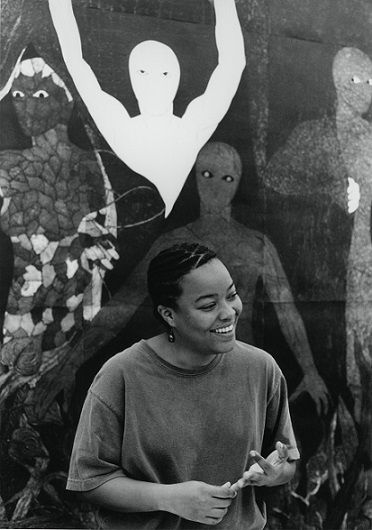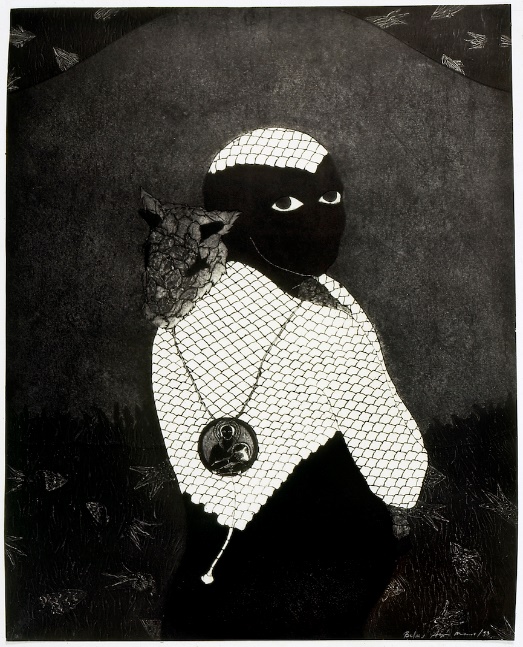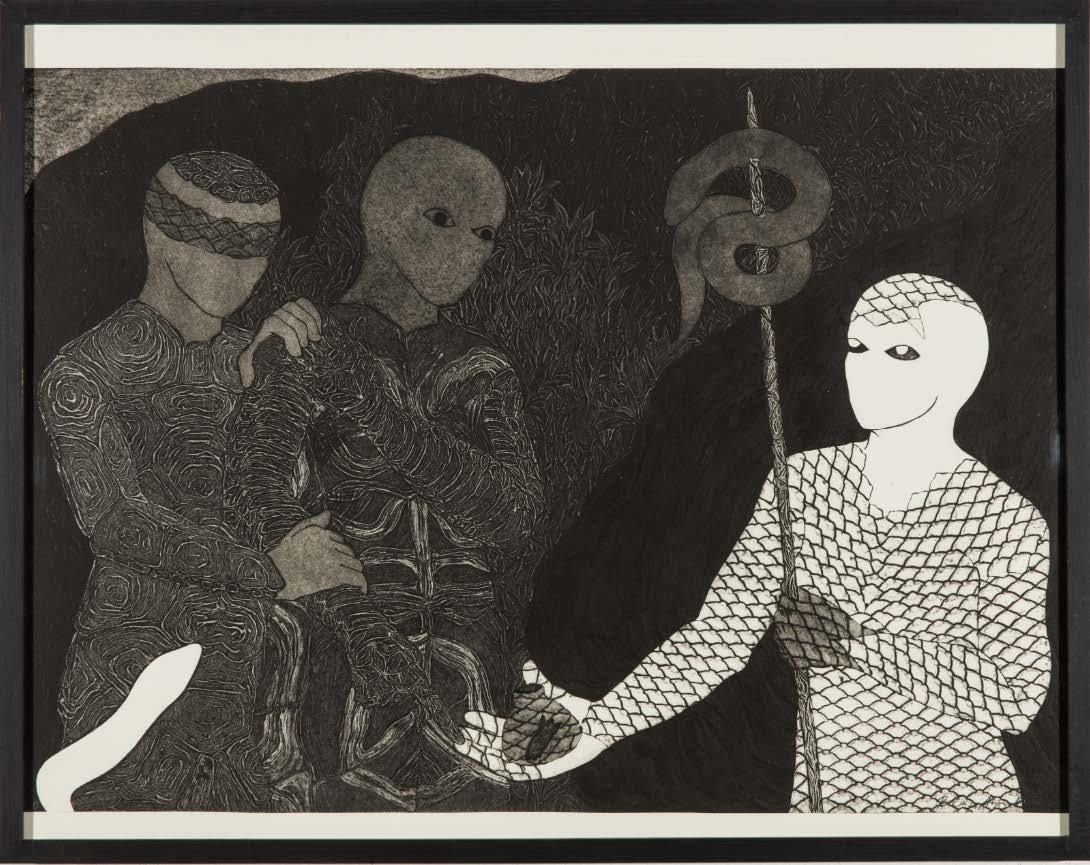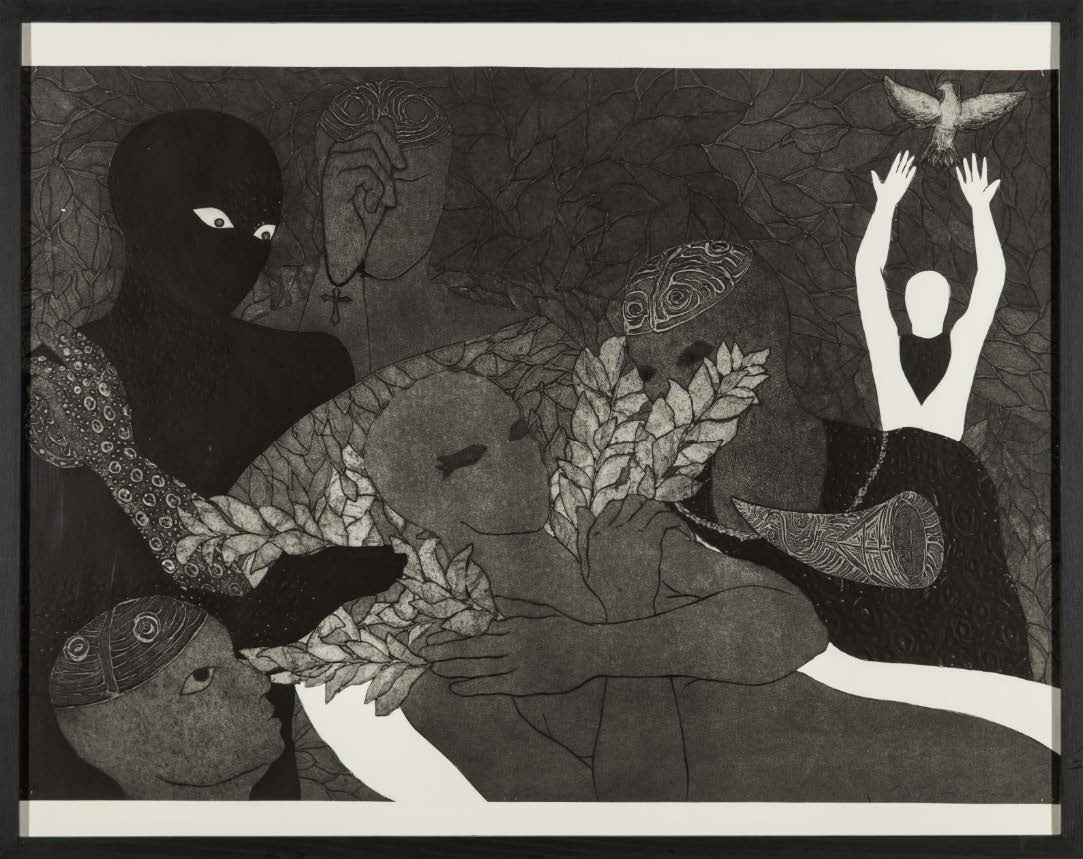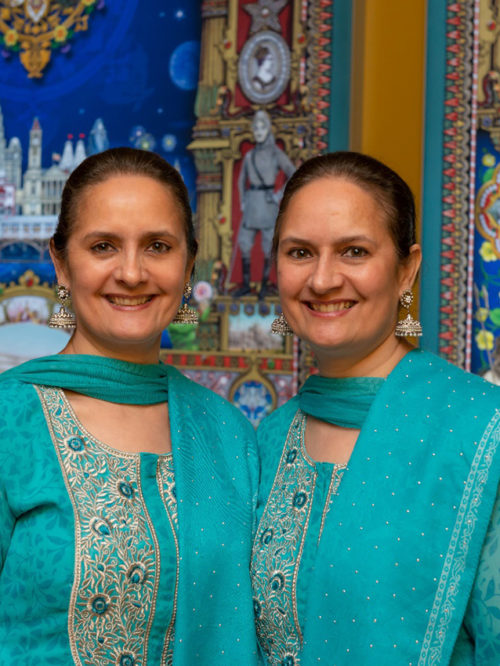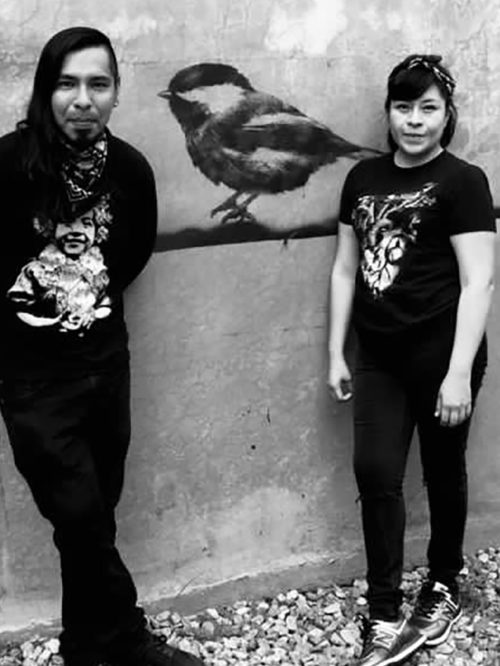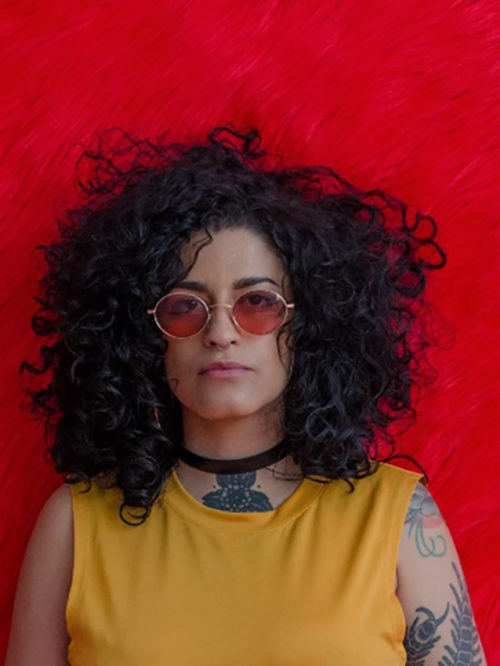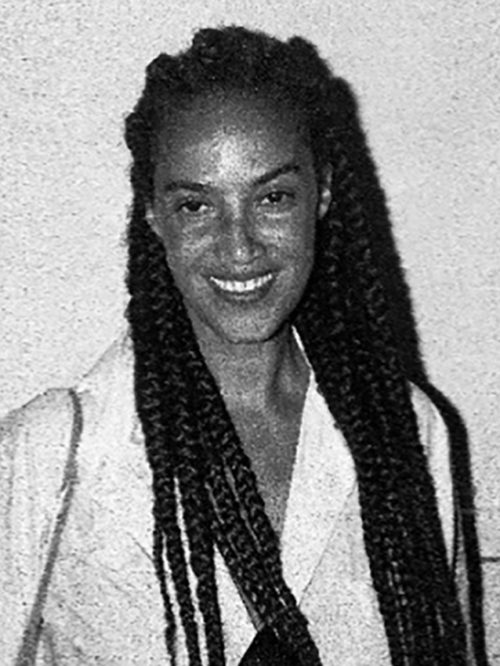Belkis Ayón Manso
3 collagraphs
Ludwig Forum for International Art/ on loan from the Peter and Irene Ludwig Foundation
Untitled (Sikán with Goat), 1993
Let Us Go, 1993
The Sleeping Woman, 1995
“La imagen de Sikán prima en todas mis obras porque ella, como yo vivió y vive – a atraves de mi – , en el desasosiego buscando una salida.”
“The image of Sikán dominates in all my works because she, like me, lived and still lives in anguish, looking for a way out – through me.”
Belkis Ayón
The Abakuá are an Afro-Cuban fraternity that dates back to the 19th century and keeps its members and rites secret from the public eye. It is believed that this secret society was founded by enslaved men so as to provide mutual help and protection under the cruel reality of slavery. They are not one of the Catholicism-based syncretic mystical groups so common in Cuba: rather, Abakuá harks back to the Ekpe or Ngbe religion, indigenous to the Cross River region in present-day Nigeria.
Cuban artist Belkis Ayón Manso began exploring the Abakuá myth in large-scale prints in the 1990s. In her work, the female figure of Sikán occupies a central position. According to legend, a fish revealed the divine secret to her – she told it to her partner and was sentenced to death.
Ayón revives the Abakuá myth about Sikán, always depicting her without a mouth and with a piercing gaze. This can be read as a metaphor for political censorship and the oppression of women in a culture dominated by patriarchy and machismo. Strikingly, Sikán bears the features of the artist herself, who took her own life at the age of 32. Ayón’s symbolically charged work also reveals an intense engagement with Afro-Cuban traditions and history, which she cites in her mysterious images from a woman’s perspective, empowering female figures in contradiction to the political norms and economic conditions of her time.
Belkis Ayón Manso (born in 1967 in Havana, Cuba / died in 1999 in Havana, Cuba) was a Cuban graphic designer, printmaker, curator and professor. She studied engraving at the San Alejandro Academy in Havana and took part in numerous international exhibitions. Her works blend together a variety of facts and myths regarding the all-male secret society, Abakuá, which is still in existence. This society harbours mythical ideas about the African slaves shipped to America, such as the figure of Sikán, a female explorer destined to reveal divine mysteries. Ayón Manso assigns to this female figure the leading role in the myth, thus challenging the prevailing patriarchal structure. With her prints and collagraphs full of dark silhouettes and ghostly white figures, Ayón Manso is considered a pioneer in the art of printmaking.
→iayonbelkis.cult.cu
→davidcastillogallery.com
Photo of the artist and Copyright: Werner Gadliger


